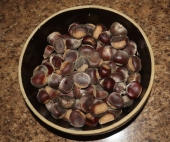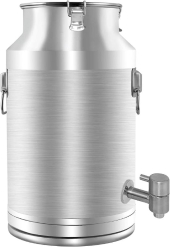I’ll set aside my thoughts about whether (and how) generative AI will be as transformative as some hope and others fear and assume for the sake of argument that it will be around to some degree going forward.
for better or worse, the stuff uses a truly staggering amount of electricity. data centers, server farms, cloud computing, crypto, and cetera were all plenty power intensive before gen AI made a real splash, but things seem to have passed an inflection point where ideas that would previously have been outlandish are now taken seriously and even carried out. decommissioned nukes being recommissioned. retirement of uneconomical coal plants delayed or reversed. net-zero goals and policies watered down or abandoned entirely. nuclear fusion discussed with straight faces.
there are political and cultural factors involved that aren’t useful to discuss here (but that I don’t want to minimize the significance of). regardless, the demand for electricity is increasing rapidly and that increase is plausibly predicted to accelerate. however things shake out mid- to long-term, this could present a possible career path and guide a reasonably prudent course of study.
that could mean many different things to different people. study electrical engineering. nuclear engineering. mechanical engineering. civil or environmental engineering. lineman apprenticeships. home energy efficiency consulting and contracting. niche home-scale alternative energy design. leading workshops on adopting low-energy lifestyles. making art or tools out of scrapped electric clothes dryers. a great many other options and variations on these.
not all of those routes involve formal education. for those that do, the amount and cost could vary from getting paid while receiving it to requiring loans that could remain a burden for decades. for myself, I was comfortable taking on a modest amount of debt to get a couple of degrees. on the order of $10k (USD). I worked a variety of jobs and internships while I got an undergraduate degree and I got paid for a masters degree. I got a handful of small scholarships. I had decades of practice living cheaply (and happily) by the time I decided to get those degrees. all of these things helped me avoid more loans.
probably most importantly, I had a strong community and network of support. some of that existed before I went to a university. some I built along with likeminded folks I met in school. all of it helped in one way or another. entirely independent of the support during school, my community is a tremendously important part of my life both before and after. from my point of view, the community a person joins/creates/cultivates/maintains/inherits/falls into/tolerates grudgingly is much more important for a person’s success (as I idiosyncratically define that) than their choice to get a degree or not. I don’t mean to suggest that the self-reliant/independent/hermit life isn’t a reasonable option, but I don’t personally have anything to offer a person of that persuasion.
like Christopher Weeks, I really liked college. the hodgepodge of classes I took at a community college in the years after high school (including at least botany, math, drama, history, literature, anthropology, photography, psychology, political science, and logic) was a whole lot of fun. very little of it was directly useful for the farming career I had at the time, but it was all useful in some degree for living a full life the way I wanted (and want) to.
later, at a state university, I kept up the same habit of taking interesting and edifying classes with no consideration of leveraging the experience into advancing a current or future career. in class and out, I met and learned from a wide variety of folks with a shocking (to me at the time) range of histories, ideologies, strengths, struggles, stories, and plans. I did that until my registration was blocked for having too many credits with no major, at which point I declared the least constrained major I could find to keep up the adventure a little longer. it meant using resources for school that I could have put toward other things that were important. this was in the mid oughts, so into the era of tuition increasing, but obviously not to the current extremes. never did get a degree from that school and never regretted any of it. would I recommend going deeply in debt to pursue a similar experience? I would not.
apart from the letters behind their name, the things a person gains from college are available via other, often cheaper, routes (with varying levels of effort involved depending on more variables than I care to try listing). college is hard to beat for getting them all in one place, though.
very few people ask for my advice about college, careers, or really anything at all (for good reasons, I’m sure). if anyone did, I wouldn’t advocate for or against a degree, at least not until I knew a fair amount about what’s important to them, what their current circumstances are, what they enjoy and find interesting, and how well they know themselves. in any event, I don’t think the choice has to be between college and the ideas paul included above. seems like a “why not both?” situation to me.
I don’t personally find the highest salary consideration the host mentioned to be very compelling, but I have some small sympathy for that point of view for the purpose of optimizing the balance of square job time and real life time when those two can’t or don’t overlap much. don’t see any of this changing much however the current shakeup around AI settles out.
I do want to briefly mention that there are still a number of places in the world where a college degree is either free or nearly so. as I understand it, it is also rather simpler to get by without a college degree in many or most of those places. there’s a lot to say about the wisdom and impact &c of such an arrangement, but it’s at the very least interesting to consider that there are other ways to handle post-secondary education. if one of those places appeals, immigration might be an option. just as likely it won’t be an option, I suppose.
thanks for coming to my self-indulgent ramble-thon. I hope you enjoy the rest of your day. don’t beat yourself up for expending so much of it reading my nonsense.









